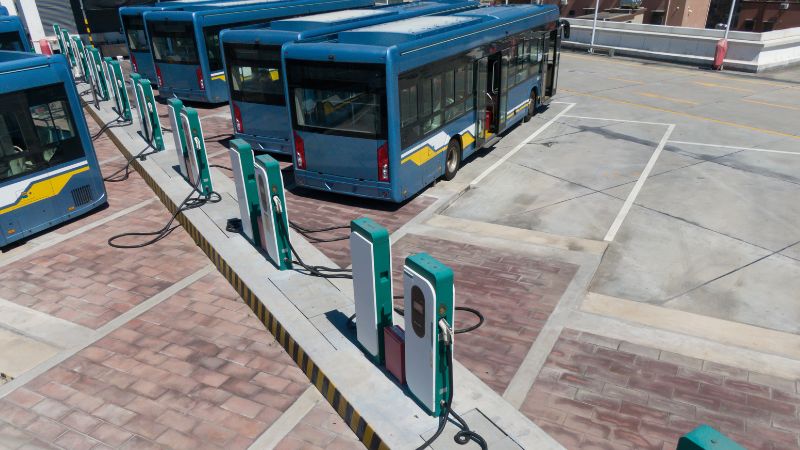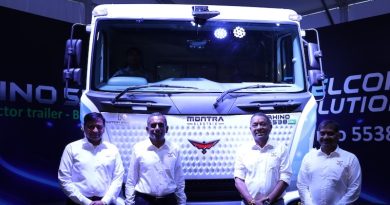Primary data on HDV localisation and market potential in India (e-bus focus) | ForeSee Report

India is on a path of energy and mobility transformation to cleaner solutions and self-reliance. For a long time, there has been a perceived void in primary data regarding parts-level localisation, the current and future market availability, and a detailed breakdown of parts. ForeSee Advisors took an initiative with the funding support of ICCT to conduct this primary study and forecasting at the component level. E-Buses (Read HDVs now onwards) have been considered for this work. Randheer Singh, Founder & CEO of ForeSee Advisors, shares a brief.
India’s ambition to convert its entire SRTU fleet of the top 9 cities with greater than 4 million population in the next decade (all retiring public bus units are replaced with EVs only) is a commendable step forward. The report outlines market dynamics, component-level supply chain realities, and the localisation trajectory necessary for building a robust and self-sustaining EV ecosystem. It underscores the growing momentum in India’s EV adoption, especially in eBuses.
The focus is two-fold: first, to assess the manufacturing ecosystem for electric powertrains and batteries; and second, to map localisation gaps and opportunities that could transform India from a high-import dependency market into a self-reliant global hub.
- Heavy-duty vehicles account for around 2% of India’s registered vehicles (~70 lakh), with nearly 3 lakh HDVs added annually.
- Electric buses are the most promising electrification segment with around 7,000 on-road units in 2024 and a projected CAGR of 30% over the next five years.
This growth trajectory is driven by schemes like FAME-II, PLI, and state-level subsidies, which provide a policy push. India’s climate commitments, with a pledge towards net-zero emissions, are another contributing factor. In addition to these, buses being the immediate candidate for electrification due to predictable routes, centralised charging, and lower per-passenger emissions, adds to the overall electrification needs.
By 2030, eBuses are expected to account for 32% of India’s HDV fleet, supported by localisation drives and demand aggregation. However, one of the biggest hurdles for EV adoption in India is cost.
Batteries and powertrains together constitute 60% of the total EV cost. Within this, battery packs account for the largest share of 55%, while motors and controllers contribute significantly with 18% and 3% respectively due to reliance on imported rare earth materials and semiconductors. High-performance battery costs at the system level are expected to fall from $130/kWh in 2024 to $95/kWh by 2030, thanks to chemistry advances and scale.
Motor costs with Permanent Magnet Synchronous Motors (PMSM), preferred for buses, rely on imported magnets. Motors make up 18% of the ePowertrain cost.
Controllers & Power Electronics have limited local capability, with semiconductors almost entirely imported, constituting 3% and 24% of the ePowertrain cost, respectively.
Thermal management & ancillary systems have moderate localisation for parts common to traditional ICE vehicles, but advanced sensors and control units remain import-heavy. Thus, while India has matured in ICE-linked components (transmission, housing, shafts), localisation of EV-specific subsystems is the bottleneck.
The study also projects a growth in the overall Battery Market value from $228M in 2024 to $998M by 2030, with Average Battery Size increasing to 350 kWh.
Uneven localisation across EV components
The report highlights uneven localisation across EV components, as mentioned below:
- Motors: Current localisation 45–55%, expected to rise to ~80% by 2030 as Indian firms scale stator/rotor production.
- Motor Controllers: Current Localisation 35-45%, expected to rise to ~75%.
- Transmission: Already at 50-60% localisation, benefitting from ICE legacy, expected to go above 85% localisation by 2030.
- On-board Chargers & DC-DC Converters: Moderate progress from 40-50% to more than 75% localisation forecast by 2030 on average.
- Power Electronics: Current localisation is around 15-25% – expected to reach around 70%, depending on the success of the government’s India Semiconductor Mission.
- Battery Cells: Currently 5-15% localisation. With PLI schemes and recycling, this may reach ~50% by 2030.
- Thermal Management Systems: High overlap with ICE cooling systems, offering >80% localisation opportunities by 2030.
The uneven landscape indicates that India’s EV manufacturing chain is assembly-driven today but can evolve into end-to-end production with targeted policies and investments. The path to accelerating EV adoption in India is clear but requires systemic alignment.
The roadmap to a self-reliant EV ecosystem rests on three pillars.
- Technology Maturity: Advancing from assembly to core manufacturing of cells, semiconductors, and high-efficiency motors.
- Localisation & Resilience: Reducing import dependence to mitigate geopolitical risks, while developing indigenous supply chains.
- Sustainable Financing: Mobilising capital through PPPs, green bonds, and risk-sharing mechanisms to enable both demand (affordable EVs) and supply (domestic manufacturing).
India’s electric future hinges on accelerating adoption while simultaneously strengthening domestic manufacturing. The electrification of HDV ebuses is the immediate high-impact opportunity, but cost and import dependency remain hurdles. By addressing supply chain gaps, leveraging financing innovation, and aggressively pursuing localisation through government and industry collaboration, India can build a resilient, self-sustaining EV ecosystem. With strategic execution, India’s EV revolution can drive both sustainable mobility and global competitiveness.
If executed well, India can not only meet domestic demand but also position itself as a global hub for electric buses and powertrain components, contributing significantly to its green growth agenda.
The detailed report can be accessed here.
This article was first published in EVreporter September 2025 magazine.
Also read: Battery replacement strategy key to e-bus operational feasibility
Subscribe today for free and stay on top of latest developments in EV domain.






